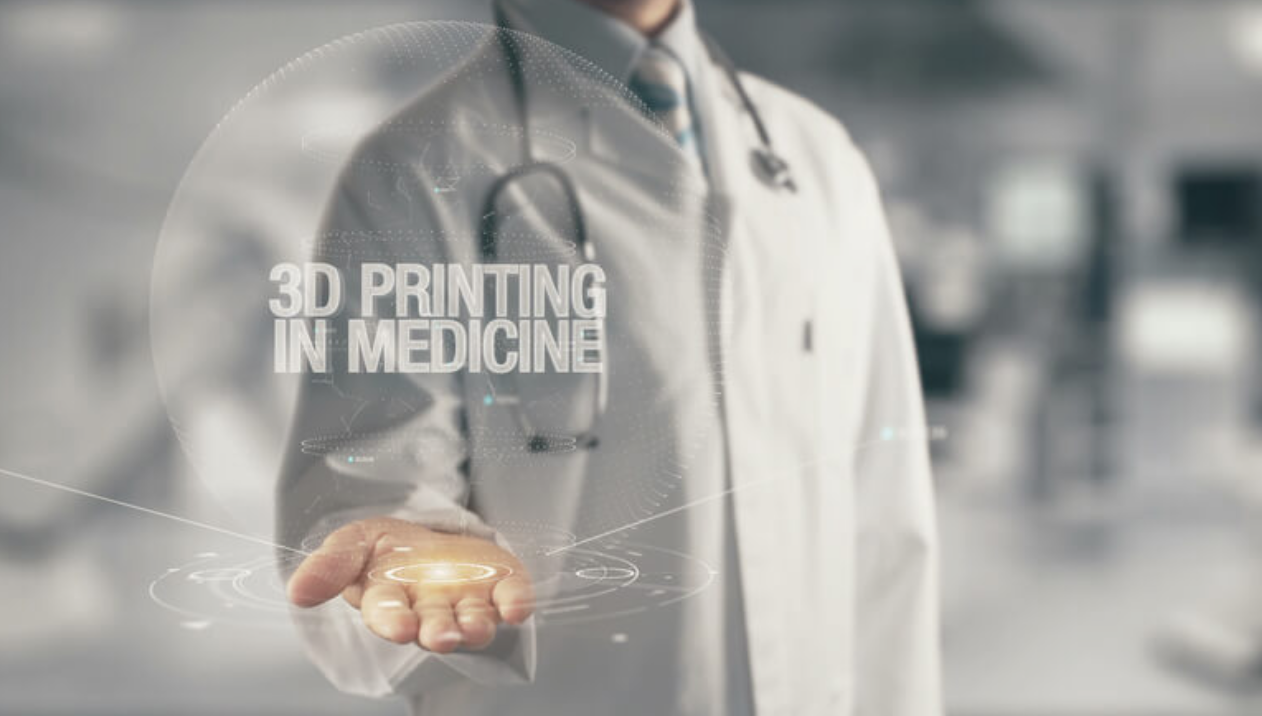MEDICINIAL ADVANCEMENTS IN 3D PRINTING

BY ABIGAIL FRIEDEL – With the medical field’s exponential increase in technological advancements, there is no limit to a device’s application. Recently, medicine has unexpectedly ventured into traditionally engineering based technology: 3D printing. Originally referred to as additive manufacturing technology, it was fundamentally a process of stacking thin layers of solid materials to form a final product. With the addition of stereolithography in 1984, with which designers could create digital models of their projects, they began to produce accurate, tangible representations of digital concepts. This process of turning virtual renditions into physical objects is known today as 3D printing. Currently, this technique has been employed in engineering, industrial design, art and, most medicine.
While it makes sense that these printers would be able to layer materials such as silicone, polycarbonate and other plastics, scientists have dedicated recent decades to testing the use of medicine specific materials- nylon, titanium, and even cells. With the precision provided by 3D printing, the incorporation of such materials enables doctors to specify dimensions and functionality of printed devices with more ease than ever before. These advances allowed the Wake Forest Institute for Regenerative Medicine to implant the first 3D organ in patients in 1999, with little fear that it would be rejected by their immune systems. Since then, scientists have been able to build a functioning miniature kidney, prosthetics, and even the most infinitesimal of blood vessels, among hundreds of other advances.
By now it’s obvious that the 3D printer can do exactly what it was intended for- it can create creating physical manifestations of digital products. Incredible, mind blowing products, but nothing outside it’s original purpose. The real question lies in what follows: what are doctors doing with these 3D products? How is this technology utilized in And is this technology going to be legitimately incorporated into medical laboratories and classrooms?
In response, it already has been.
The 3D printer is being included in nearly every component of medicine, from organ printing and prosthetic design to teaching and surgical planning. Doctors can now make products that are not only specific to the patient, but ones that are fashioned out of their own cells, exponentially reducing the chances of immunal rejection. Furthermore, surgeons have begun to use printing to plan their surgical processes on a tangible and exact copy of their patients internal structures before the actual surgery. This ensures little to no room for error once the real surgery begins and can shorten the time of the overall operation. Moving out of the operating room, professors at renowned universities have begun to use 3D printed models rather than cadavers in medicinal study. Commended for being a more ethically sound alternative, practicing students can perfect their skills on extremely lifelike replicas without having to cross as many moral boundaries.
While the amount of ethical grey are is indeed minimal, there are still concerns with the morals behind specific components of 3D printing, mainly revolving around printing human cells and inserting them into the body. Granted, that capability in and of itself is not the heart of the issue, rather skepticism is found in what it means for further advancements. If scientists can create functioning organs, the possibility of being able to print all the components of an entire human body is worth thinking about. Does the future hold entirely 3D printed bodies? Under what circumstances would that ability be condoned?
Because printing as a medicinal technique is still in the initial stages of development, the boundary between medicinal assistance and medicinal experimentation has not yet developed in full. There is no current evidence to indicate how reliant doctors will become on 3D printing in the future, or what the long term consequences of 3D printed products will be. The scientific world must wait with baited breath, because only time will tell.
